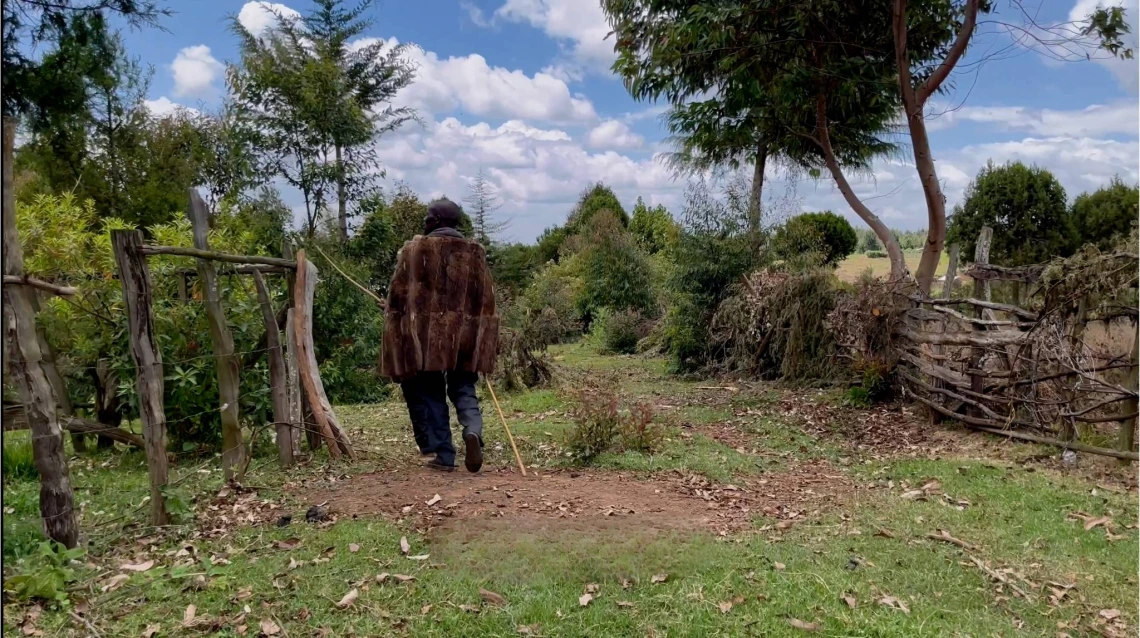Video “Every living being depends on the trees” - Ogiek from Mau Forest in Kenya
Indigenous Wisdom Fortifies Forest Preservation

Forests pulsate with life, essential for the Ogiek people and all humankind. For the Ogiek, a hunter-gatherer society rooted in the high-altitude regions of Kenya's Mau Forest Commission and Mount Elgon for millennia, these woodlands are life itself, the source of their sustenance, culture and spiritual beliefs. Their relationship with these forests is a deeply interwoven tapestry of social, economic, political, and spiritual threads. Generations of close interactions have gifted them with a profound environmental understanding, employing their Indigenous scientific knowledge and sustainable practices that ensure the long-term health of their forest home.
The Western view of rainforests as untouched wilderness areas, sparsely populated by isolated tribes in pristine balance, overlooks the widely documented reality: millennia of indigenous presence have shaped and cultivated these ecosystems. While hunter-gatherer communities like the Ogiek represent a smaller portion of today's forest dwellers, their ancestral wisdom holds invaluable keys to effective forest protection. Indeed, the benefits of healthy forests – habitat for countless species, crucial carbon sinks, maintenance of water quality, climate stabilization, and spaces for human connection with nature – are undeniable. Recognizing and actively involving Indigenous Peoples in conservation is not just ethical; it's a crucial strategy for successful forest preservation.
The Ogiek story highlights this imperative. Despite their deep connection to the Mau Forest Complex, they have faced repeated forced evictions, often masked as conservation efforts, by Kenyan government authorities. Tragically, prior to our visit in February 2024 to film their testimonies, approximately 167 homes and a school were razed by the government without warning at a place within the forest called Sasumwani by the government without warning. Kenya's recent reforestation and carbon credit agreements carry the risk of further fueling land grabs from Indigenous communities and reinforcing the practice of "fortress conservation" that prioritizes exclusion over collaboration with the Indigenous Peoples living in these areas, making these evictions particularly alarming.
The Ogiek living within the Mau Forest Complex number around 20,000, with some solely reliant on hunting and gathering deep within the forest. Most also practice small-scale agriculture and livestock rearing, and face becoming "conservation refugees" if these evictions persist.
The irony is stark: the very people whose Indigenous knowledge has sustained these forests for generations are displaced, while their land often succumbs to logging and unsustainable practices as evidenced by the severe degradation of parts of the Mau Forest after previous evictions and the influx of illegal settlers. The Kenyan government's attempts to evict all Mau Forest inhabitants, including the Ogiek, contradict significant legal precedents. In 2017, the African Court on Human and Peoples' Rights delivered a landmark ruling affirming the Ogiek community's rights, recognizing the illegality of past evictions, the denial of their resource access, and the infringement upon their cultural and religious practices, African Commission on Human and Peoples’ Rights v. Republic of Kenya (2017). The Commission further condemned the discrimination they faced through the denial of their recognition and protection as Indigenous Peoples.
In a follow-up ruling, African Commission on Human and Peoples’ Rights v. Republic of Kenya (2022), the Commission ordered Kenya to compensate the Ogiek, demarcate and title their ancestral lands, consult with them on land concessions, officially recognize them as Indigenous Peoples, and ensure their effective consultation in all development, conservation, or investment projects affecting their land. These judicial affirmations, which were a direct result of the persistent mobilization of indigenous-led organizations, bolstered by international human rights groups, represent a powerful testament of indigenous rights across Africa. Underscoring the need for compliance, the UN Special Rapporteur on the Rights of Indigenous Peoples has also issued several communications to the Kenyan government (e.g., KEN 4/2023, KEN 3/2020 ; KEN 2/2016).
The Ogiek's story serves as a potent reminder that true forest protection cannot be achieved by excluding its traditional custodians. Instead, by acknowledging the rights of Indigenous Peoples and actively integrating their profound ecological wisdom and scientific knowledge into contemporary conservation practices, we can forge more effective and just pathways towards the sustainable stewardship of these vital ecosystems for the benefit of all. The future of our forests hinges on embracing a collaborative approach that respects the rights and knowledge of those who have lived in harmony with nature for millennia.

